Text
Rise of the Poor Image
Interview with Zack Rosenberg, Trust﹠Safety/Community Representative, Tumblr and Amanda Brennan “Meme librarian”, Content﹠Community Associate, Tumblr
In Hito Steyerl’s essay, “Defense of the Poor Image,” she suggests that the worth of a digital image could be judged on its speed and penetration rather than resolution. In this case, we would give the greatest worth to the poorest image of all, the GIF.
An early file format for the internet, the GIF could provide a simple animation without requiring a plug-in at a small file size. With the onset of Flash and greater bandwidth, the use of the GIF fell out of favor but endured on message boards and forums. It’s ability to portray small loops of visual data found a new life embedded in online conversations. Its resurgence is due to its ability to translate information into a distilled and often entertaining format. It stands in the place of words.
Vintage Dancing Baby GIF
In Wim Crouwel’s “Type Design of the Computer Age” he felt that the computers will bring the development of new characters and communication symbols. This has come to be, but not through reinventing fonts, but through the creation of memes, emoticons and reactionary GIFs. This could be the universal pictorial language that Charles Bliss was seeking with his Blissymbolics.
The speed and penetration images can obtain on the internet, also has concerns for the creator. Steyerl speaks to how piracy is a threat to mainstream channels but can also provide exposure to works that are considered less commercial. How does a creator balance the threat and the benefit?
The Falcon goes into hyperdrive.
Many digital copies are also cut, edited and transformed into new works. This could be considered transformative but it could be appropriating. In the age of social networks and fandoms, how does someone protect their work?
Tumblr is a social network built around the idea of microblogging. Small digestible bits of media, a quote or a link are shared amongst followers. It invites discourse through posts versus the long diatribes you see on other blog platforms. It is also known for its audience’s embrace of the GIF.
Hope you like cats…
Tumblr is known for posting quick little things, microblogging and lots of sharing of media. Is that how you guys see yourselves?
Zack: I always like how it was explained to me, and how I explain it when I am on panels. Whether you are a creator or someone who is passionate about something, you are a curator of content that you believe in.
It’s almost like creating a museum of my personal passions. When you go to my blog it’s about my dog, really tasty food or comics and animation. It encompasses process… And what I mean by process is how to make an illustration or something move. The platform really goes into that well... as that backend look at how things are made.
To really boil it down, it’s my own museum of what I like.
Amanda: The way we frame it from the marketing side, is that Tumblr is a place to share your passion. And you can be passionate about a TV show, about food, about dogs… But this is where you go to meet the people who share your interests. And really dive into the community of people who love the thing as much as you do.
Original Longcat
And to compare it to something like Pinterest… When I think of someone who is using Pinterest, it’s usually a mom looking for a recipe or someone looking for a workout, or someone looking for wedding stuff. Here on Tumblr, it is more like that fandom activity where people are looking for TV show gifs or the latest Honey post. You might find that on meme site, or FB, but Tumblr is where people get a little weird and shout out their deepest weird feelings about the thing that they love.
Zack: To add to that… I think it is about creating content to have a conversation. Which adds another layer and what I find fascinating (and we talk about this in our metrics panels) is that people are sharing feelings and posting entire conversations in tags or gifs. And driving this sense of unity... because “I feel that too”… I feel that same thing via this fandom or this thing happening in the world. Let’s connect and join together and have a community of friends strictly on the platform.
It’s almost like it’s own visual language with emoticons and the memes. You can really have a whole conversation.
Zack: I can pull conversations, and they are just all GIFs. We are just responding to each other based on reactions from our favorite types of media. It’s such a fascinating cultural thing that we have gotten ourselves into.
Gleeful Wonder Woman
Apple just installed a feature where can pull GIFs directly into your responses and making that more accessible. Seeing that trend being baked into other products and how Tumblr contributed to that, is a cool accomplishment.
Amanda: If you are thinking about a GIF as language, there is a really good talk by Kenyatta Cheese on how they have come to define language. And how it evolved both with the internet and as a file format.
Zack: He dressed as an internet meme… that blew my mind.
Amanda: The culture has involved so much. I just got back from a cat convention. While I was there I presented a talk on the history of cats on the internet.
We started 1998 with the first use of emoticon cats in Japan, then we go through Long Cat, Nyan Cat, LOL Cat and Pusheen. And in the back row of this event, there were these women with gray hair and they all had they all had their flat Instagram cats.
Nyan Cat
At the end, I asked everyone who had participated in this sort of thing to send their URL and posted them on screen. Most people had 10-20k followers on Instagram, including these older women who you wouldn’t think of as someone who is very active on social media, but here they are… Coming to a convention to meet people their “cat crew”… with the flat cats. They are really owning their identity on social media. And this very heavy image focused community of cats. It was a weird time.
Zack: I am so jealous…
I understand because I am crazy dog owner. My fiance runs a Groot, my dog, Instagram blog. It’s as if it’s him talking and enjoying the world.
She has created a persona of him where he is writing the blog and his followers have been increasing by 10-15 each week. That is pretty good because it is just a back-burner project. One post a day kind of thing. It’s just funny to see how it is contributing to that dog community. Other dog blogs follow him… which is like surreal to me. People doing the same exact thing with their dogs. And I find that awesome.
Pusheen!
What I find interesting about what you just said, Amanda, is that there is a history to the cats on the internet. It seems you are trying to give credit to people who created these images. There are so many floating around without regard for ownership... People taking things and appropriating ideas.
Zack: And that’s my department. I am a trust and safety agent and a community representative in terms of trust and safety. Part of the job is moderating anything that infringes on copyright, DCMA, and that inlcudes GIFs. Technically there has been no legal precedence over how a sense of ownership goes over a GIF.
Because they are almost transformative…
Zack:They are transformative enough to be your own content, so we are actually going to honor people’s ownership. We have certain policies and procedures that can prove that you created the GIF first. We all have that metadata, that is not user-facing. People often come back with “that is from a movie, how can they have ownership over a GIF.” One, there is no legal precedence and two, it is transformative enough by law to be considered fair use and their property.
It’s like sampling in music.
Zack: Yeah… It’s a very interesting case. For one, most people do not understand copyright law… like just the general public… Which is a challenge in itself. We can’t educate users because that will put us in a gray area if they misinterpret what we say. We can only point them in the right direction. So often we will be like “now is a good time to read about copyright law, here’s a link.” We give them more of an informed direction.
Need a Nap
There’s a lot of interesting things going on with people who are creating their own content on Tumblr in how we define that sense of ownership and who owns what. There was a famous court case where (and we love to tell this story at our panels at Comic-Con) a guy was traveling overseas and a monkey took his camera. The monkey took a bunch of pictures with his camera. Eventually, he got his camera back and posted the photos online. A bunch of outlets took the photo and posted it. He felt it was copyright infringement, but a judge ruled that because he didn’t take the pictures, it wasn’t. The monkey took the pictures and the monkey owned the copyright. And that’s it. You have to be the one to create the visual aspect. And that’s an interesting aspect to how we distribute content. Especially when it comes to photos.
And then there are certain parameters when it comes to the more dark web stuff… like privacy infringement. California specifically has changed privacy laws in response to the internet. We are generally heavy-handed when addressing privacy because we don’t want to be in the position of potentially breaking any laws. And that isn’t just photos. It’s phone numbers and other information that would not be public.
I could chew your ear off on policy all day…
How does a privacy policy work with memes?
Amanda: It’s so hard. I have been doing meme work now since 2011. We have shifted from “Oh, these are random images floating around the internet”, like Nyan Cat and Long cat. All of the old cat memes… No one knows the names of those cats or who owns those cats. It’s very hard to track down the information because someone just put it online on Funny Junk or some other site. People think that it can’t be traced back to me, because no one should know who I am on the internet.
Then as Facebook rolled out and the internet became more prevalent in our daily lives, things shifted. That’s when people became like “Oh, I have ownership of my internet content.” And that shift into “I own this and this is my copyright, and you can’t steal it.” has started happening. And we saw that as YouTube rose and the appearances of “Grumpy Cat”. That’s when the owners were like “This is my cat, this is my content I am making about my cat.” They got this micro-fame where they were able to turn it into money. You saw this with YouTubers like Tyler Oakley, who was able to build a brand on his internet content.
This was about the time when Fuck Jerry started to become popular. Fuck Jerry started on Tumblr as a meme repost site and Instagram account that steals everything from everywhere, and isn’t concerned with copyright. "It’s out there and now it’s mine". He has built a whole empire and made tons of money. His empire is built on stealing.
Haters Gonna Hate
There was also copyright issues around the dress. The dress that broke the internet. The girl who posted the photo did not take the picture and did not own the photo.
Zack: I remember that day because I was called down and asked: “Do you see this?” And I thought I was going crazy. I saw “blue/black”.
Amanda: I saw both… my eyes kept flipping back and forth… I really thought I was dying.
And the trend now is private facebook groups where people are making and sharing content. Then if it gets out and becomes a really big thing, do you want to admit that you made this thing in a secret FB group? The copyright thing gets blurry. Some people want to say “I own this thing and I am going to shout to the ends of the earth” and some are like “hmmm… I guess I made that. I am just going to step away from it and let the internet have it.”
Zack: There really are those two polar opposites. Working directly with it, there are people who understand the copyright laws and procedures. You swear an oath when you file a DMCA claim so we (Tumblr) are not liable. It’s a dispute between the two parties. But doing that scares a lot of people and that’s legitimate. There are people who say “I made this content” but I am not comfortable swearing an oath. Or I don’t have any proof of where it came from. There’s nothing we can do and it’s at the offending parties digression to remove the content.
Brain Freeze
The trend that I’ve been seeing, and you will see this in a lot of GIFs, people have their specific kind of signature. You’ll have these translucent tags to their blog or a copyright watermark symbol.
That trend has become more and more apparent because creators want that sense of ownership. It’s really a part of meme and GIF culture. We ask “How did you create this or make it look that way?” so we can confirm it is transformative. And then they can add a signature to it.
When we speak with artists, such as comic artists at our Comic-Con panels, we tell them “That’s the biggest thing you should do.” To prevent people from reposting or taking credit for your content, just add your name so it can’t be easily removed from the images or cropped out. It’s evolved to the point where people feel they need to protect what they create. Which is fair.
Protecting your ideas is important but there’s great benefit to people getting their stuff out there as well.
Zack: Certainly. Exposure is nice. If you are a creator and you want your content to be seen, you should put up as much as you can. If it ever comes to protecting your work, you do have that right.
I hear people say, “I don’t use Tumblr because my content is always reposted.” My response is that there is a team working around the clock to protect your content. You don’t have to file any type of government papers, as long as you are 100% sure that it’s your content, it’s safe. If that is someone’s reservation, what’s stopping you?
Every company legally has to have a team to protect from infringement and misattribution. Regardless.
Find your reactionary GIF
Click a button to display reactionary GIFs.
As they appear, you can click on individual GIFs to toggle between animate and pause.
Add a reaction:
Submit
// Create array var topics = ["wut", "dramatic", "dramatic chihuahua", "omg", "shocked"]; // Functions function renderGIFButtons() { // Clear buttons before appending $("#displayGIFButtons").empty(); // Loop through topics array for (i=0; i < topics.length; i++) { console.log(topics[i]); // Create button var a = $("<button class=\"giphy_button\">"); // Add class of topic a.addClass("topics"); // Add data-attribute a.attr("data-name", topics[i]); // Add text to button a.text(topics[i]); // Append buttons to div displayGIFButtons $("#displayGIFButtons").append(a); } } // Add topic to array $("#submitGIFButton").on("click", function(){ // This line prevents the page from refreshing when a user hits "enter". event.preventDefault(); // Get input var newTopic = $("#addTopic").val().trim(); // Add to topics array topics.push(newTopic); // Clear input field $("#addTopic").val(""); // Reset buttons renderGIFButtons(); }); // Function to display Gifs on click function displayGifs() { // Get topic name from button var topic = $(this).attr("data-name"); // Build url to use in query to API var queryURL = "https://api.giphy.com/v1/gifs/search?q=" + topic + "&api_key=dc6zaTOxFJmzC&limit=10"; // Clear old Gifs $("#gifImages").empty(); // Ajax and API $.ajax({ url: queryURL, method: "GET" }).done(function(response) { console.log(response); // Create loop to create divs for the 10 gifs in the response array for (i=0;i<response.data.length;i++) { // Create div for gif var gifDiv = $("<div class=\"giffy\">"); // Create variable for rating var gifRating = response.data[i].rating; console.log(gifRating); gifRating = gifRating.toUpperCase(); // Create and populate p to hold rating var printRating = $("<p>").text("Rating: " + gifRating); // Append to gifDiv gifDiv.append(printRating); // Get image urls var imgURL = response.data[i].images.original.url; var imgURL_still = response.data[i].images.original_still.url; // Create img var imgGif = $("<img height=\"200px\"data-state=\"still\" class=\"gif\"/>"); imgGif.attr("src", imgURL_still); imgGif.attr("data-still", imgURL_still); imgGif.attr("data-animate", imgURL); //Append to gifDiv gifDiv.append(imgGif); // Append gifDiv to gifImages div on page $("#gifImages").append(gifDiv); } }); } // Create initial buttons on page renderGIFButtons(); // Adding click event listeners to all elements with a class topics because the buttons are created dynamically $(document).on("click", ".topics", displayGifs); // Toggle animation on gif $(document).on("click",".gif", function() { // Create variable to get image state var state = $(this).attr("data-state"); console.log(state); // Check and see if it is animating or not if (state == "still") { // Change to animating src and change data-state $(this).attr("src", $(this).attr("data-animate")); $(this).attr("data-state", "animate"); } else { // Change to still src and change data-state $(this).attr("src", $(this).attr("data-still")); $(this).attr("data-state", "still"); } })
References/Links
Bad Monday
Steyerl, Hito. “In Defense of the Poor Image,” in The Wretched of the Screen. Eflux.com. Eflux, n.d. Web.
Kenyatta Cheese. “How Visual Media Affect Culture and Identity Globally”. You Tube: www.youtube.com/watch?v=PhN2Be4SPoE
Tumbler’s Fandometrics
Okrent, Arika. “In the Land of Invented Languages: A Celebration of Linguistic Creativity, Madness, and Genius”, Chapter 15, “Those Queer and Mysterious Chinese Characters”, pages 160-172. Spiegel﹠Grau Trade Paperbacks, 2010
Tumblr’s Meme Librarian Has the Best Job on the Internet. Washington Post.
How much is too much? Considering infringement
Further Exploration
Contents of Maggie Stiefvater’s Brain: Post on Piracy
Fandom | Funyuns | Onion Flavored Rings
Totino’s - Live Free. Couch Hard.
Gushers
FIAT USA: Archive
adamjk serious blog
drawing megan lynn
Check, Please!
Obama Transformative Piece
2 notes
·
View notes
Link
0 notes
Photo

Five (5) images that reflect my life: Motorcycling camping with Adam (top left), code (top right), reading with Ava (middle) and our dogs (bottom left). Graduate Seminar 8/2017
0 notes
Photo



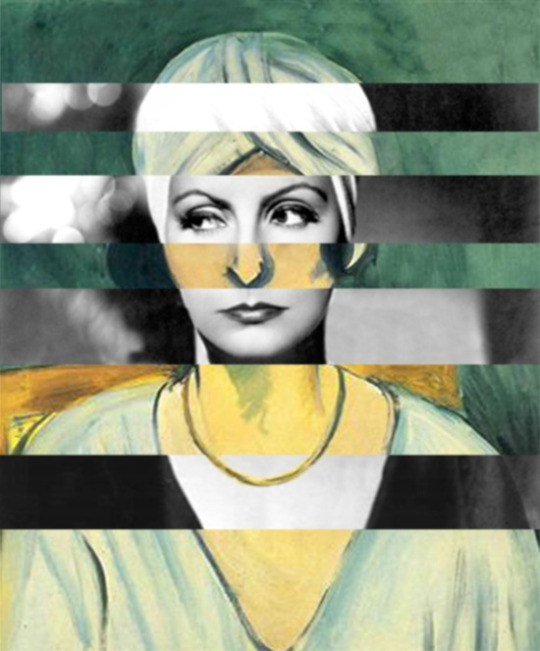
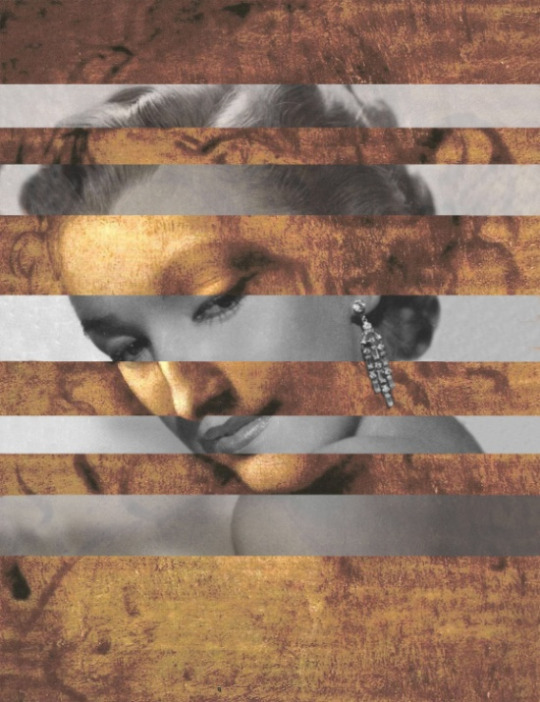
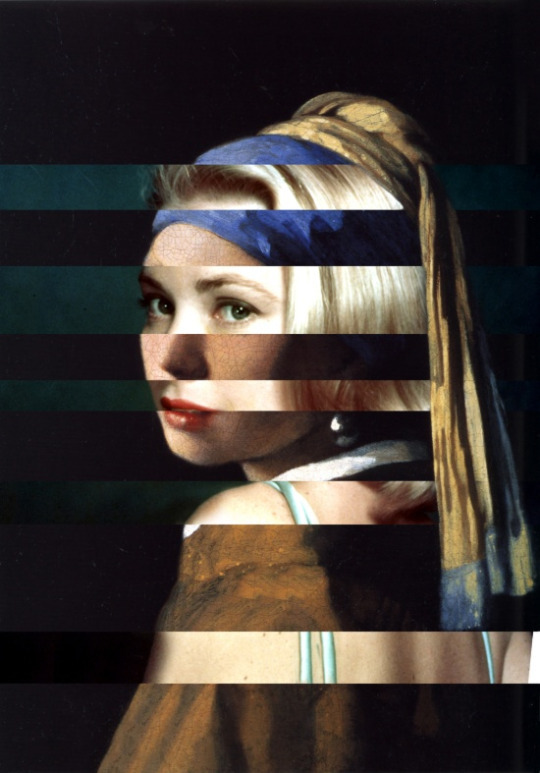
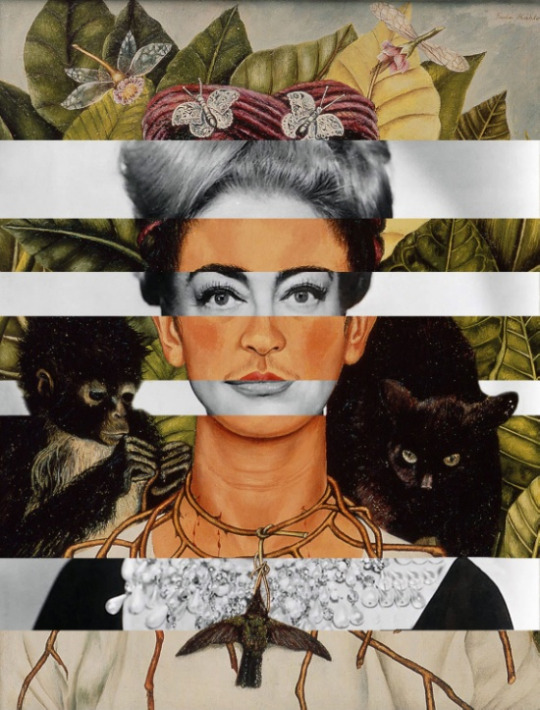


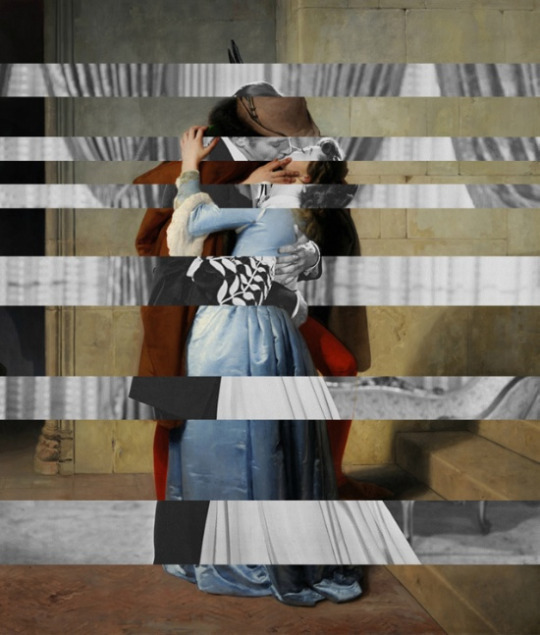
SURREAL COLLAGES MERGE CLASSICAL PAINTINGS WITH OLD HOLLYWOOD BY LUIGI TARINI
More by the Artist Here
3K notes
·
View notes